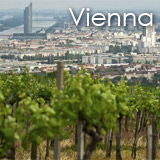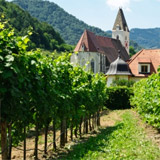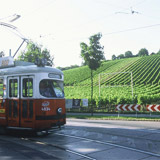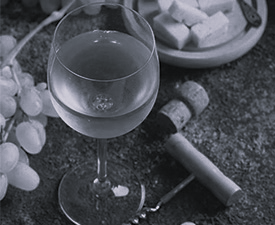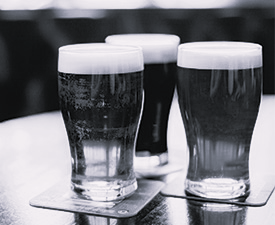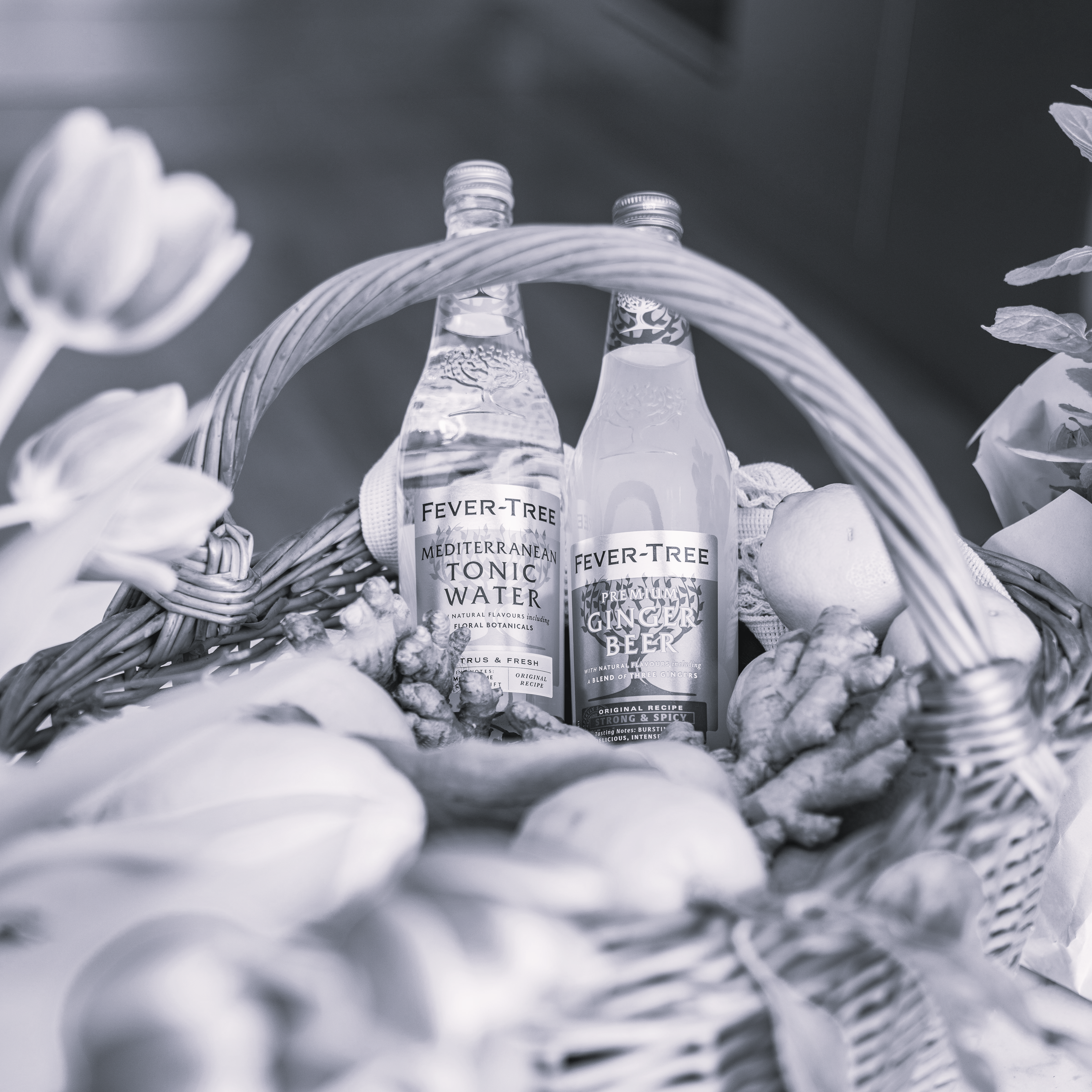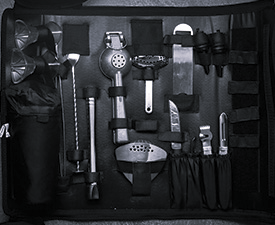Vienna - Austria's capital has approx 621ha of vineyards within the city limits. Vines have been grown within the walls of Vienna since the middle ages, although they have now been pushed into the outskirts. Gruner Veltliner, Riesling, Chardonnay and Pinot Blanc are grown on the limestone soils towards Klosterneuburg, whereas red grapes do better on the rich soil to the south of the city.
36 different grape varieties for wine are grown in the Austrian capital; 86% are white and 14% red. The most prominent white variety is Gruner Veltliner, followed by 'Gemischter Satz' - wine from a vineyard planted with two or more different grape varieties that are vinified together.
There are strict guidelines, and this definition refers to the wine from any one vineyard, that is planted with a number of different varieties, that are harvested, pressed and vinified at the same time. In earlier times, this form of viticulture was often a precaution against irregular yields and variable harvests, yet today, this style of wine has become extremely popular, either as an easy drinking, medium-bodied style, or as a powerful reserve wine with aging ability.
Fine wine from Vienna is now regarded among the classic wines of the world. There are 630 producers working beautiful urban vineyards - many reachable by tram or foot. Wine producers from the northern wine-growing villages of Strebersdorf, Stammersdorf and Jedlersdorf also have vineyards planted on the Bisamberg, north of the Danube, with its favourable conditions for Pinot varieties.
The quality of Viennese wine has increased significantly over the past years. The reason for this improvement is that focus is now on quality rather than quantity. The increase in the quality of Viennese red wine is particularly interesting - as until quite recently, it was light-coloured and neutral in taste, but since the change that occurred in the eighties, Viennese reds grown in vineyards such as the Bisamberg area have even received awards in Burgundy.
